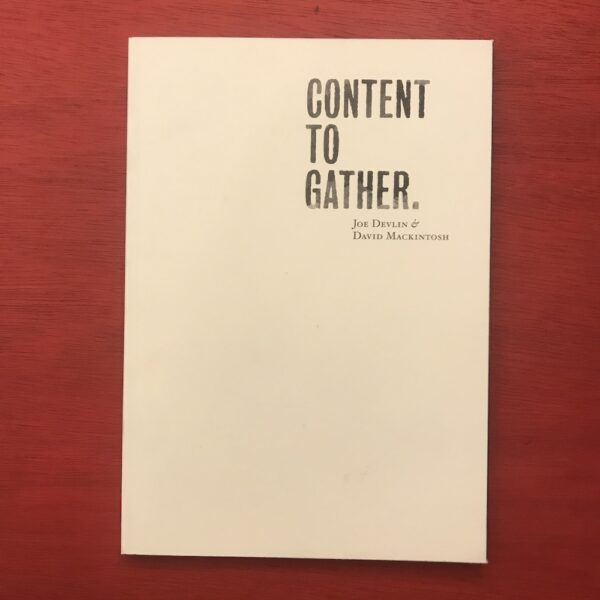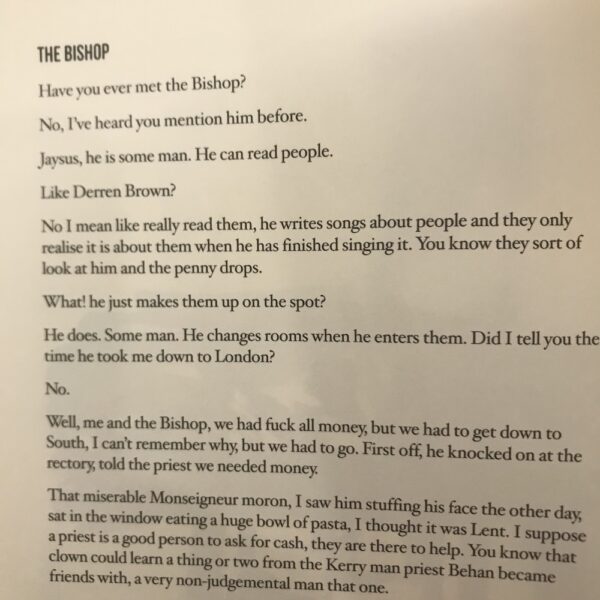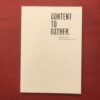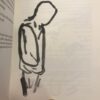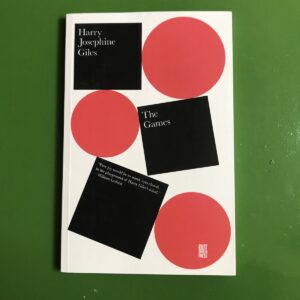Devlin, who is known for using the library as his studio, often finding his material in the margins of long forgotten tomes, has for the first time turned to the written word himself. His prose reads like snatched reminiscences, fleeting observations of human adventure where characters incidentally connect and find meaning. Martin Holman describes his style in the afterword as an: ‘ungloved but affectionate portrayal of communal celebrations, economic tribulations, everyday frustrations, bureaucratic intrusions and nocturnal piss-ups that unite his cast of life-bruised and chance-repulsed characters.’
Mackintosh’s stream of consciousness drawings, like Devlin’s writing, elevate the detail of chance to art. Holman again: ‘A scuffle on the page? For that song that must be written or the stage act that is looking for material; the story that is waiting to be dressed in vocabulary or the sardonic grin the artists yearns to wipe off an expanse of bare canvas.’
Together in the book the two artists support each other’s position, their personal take on the world, one does not illustrate the other, rather than points a finger in the direction of the individual’s ideas.

